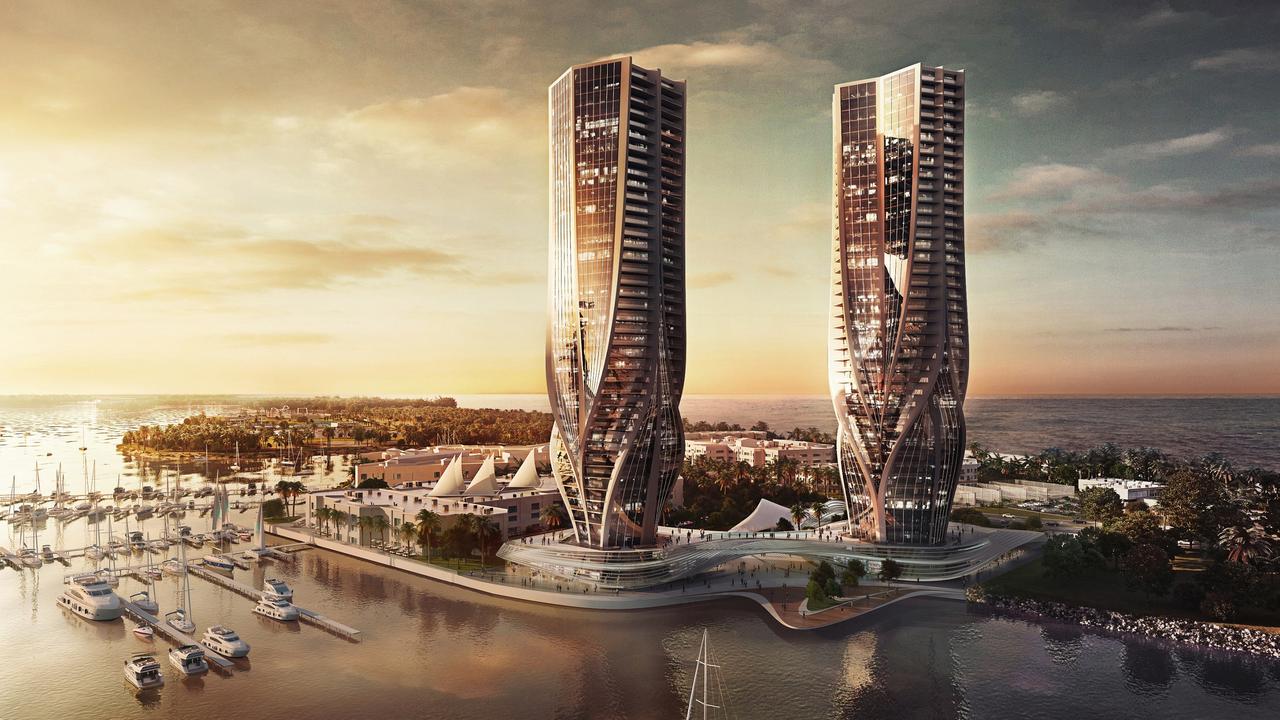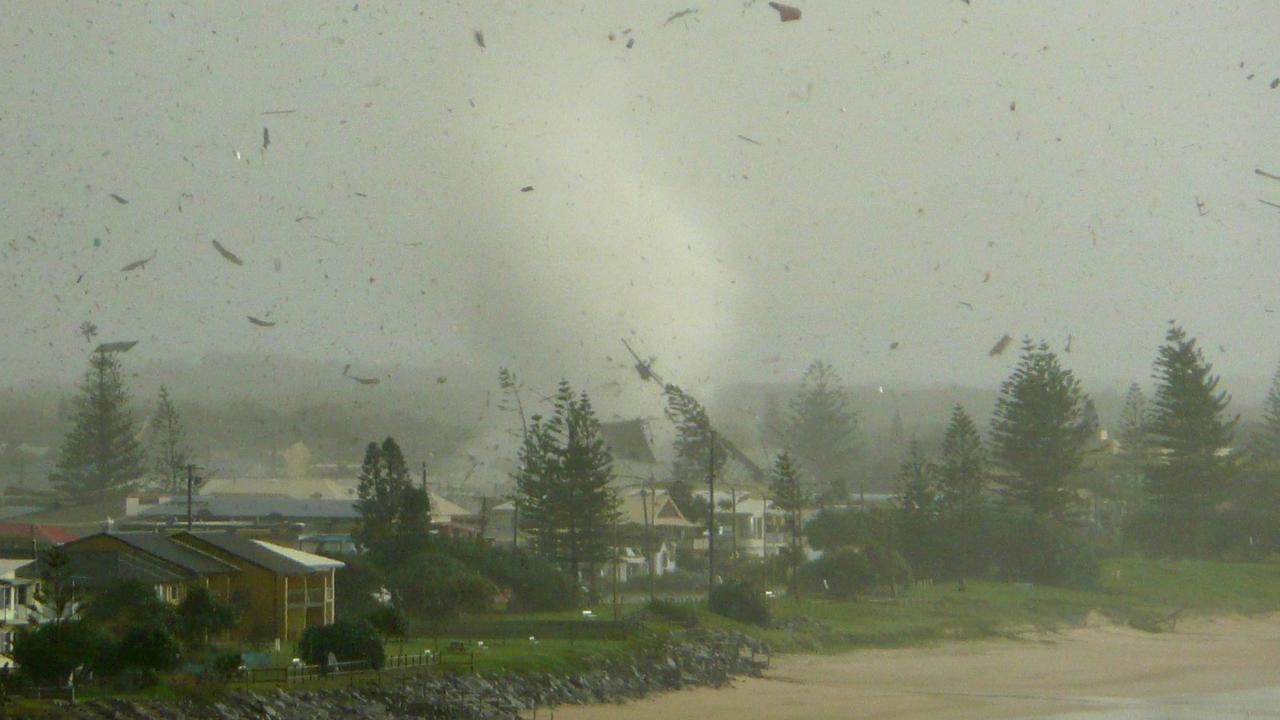1974 floods: 50 years since Gold Coast and Surfers Paradise went underwater in serious flooding
This weekend marks 50 years since the worst-ever flooding hit the Gold Coast, with the Nerang River rising 10m and inundating the city’s most famous locations. SEE THE PICTURES
History
Don't miss out on the headlines from History. Followed categories will be added to My News.
It’s been a wild summer, with some of the toughest weather the Gold Coast has experienced in many years.
From stifling heatwaves to the dramatic Christmas night storm, it hasn’t been easy.
It’s been worse for those in north Queensland which has now experienced two tropical cyclones which have battered the coastline, bringing devastation.
It was 50 years ago this week that the Gold Coast was in the firing line of Tropical Cyclone Wanda.
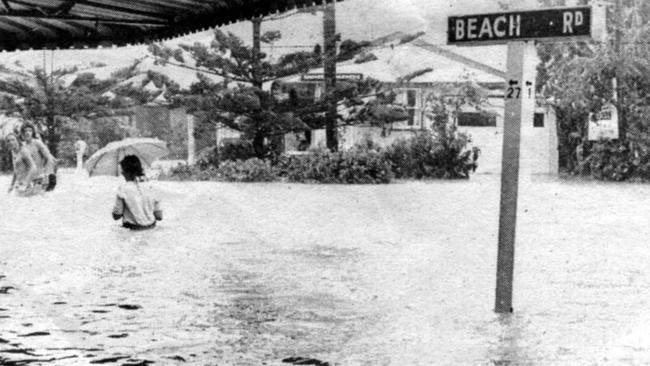
The cyclone made landfall at Brisbane, bringing disastrous flooding with it and leading to the deaths of 14 people in southeast Queensland.
It wasn’t the first time the southeast had been hammered. Back in the late 19th century the small Southport township was hit hard in the early 1890s when the area’s famous pier was heavily damaged by flooding, wrecking its swimming baths.
Fast-forward to the 1960s and the Coast bore the brunt of a devastating cyclone season.
In January 1967 Cyclone Dinah moved down the coastline off the Coral Sea.
While never crossing the coast, it caused havoc in Surfers Paradise where the Nerang River burst its banks.
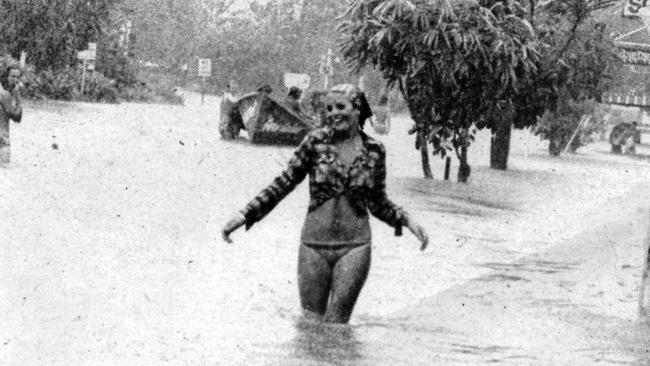
Streets were flooded while the beaches were heavily eroded and part of The Esplanade collapsed leaving a 5m hole near Staghorn Ave.
During the 1967 storms, more than 1000mm fell on the Hinterland, while Springbrook recorded a 1631mm fall.
The 1974 event, occurring in the final week of January, saw much of the Gold Coast go underwater.
The Nerang River rose by 10m on January 26, 1974 causing massive damage.
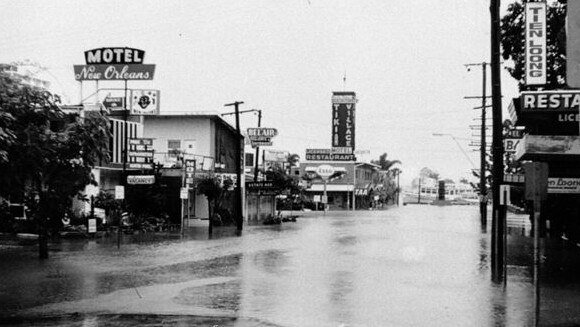
More than 1500 homes were flooded across a three-day period.
More than 1250mm of rain fell on the Hinterland and the streets of Surfers Paradise. When the Nerang River broke its banks, floodwaters rose waist-high.
Brisbane was flooded after more than 314mm of rain fell, the wettest day in the state’s capital since 1887. On the Coast, the canals overflowed and the Nerang River rose, sending the waters flowing into the Glitter Strip’s streets.
More than 2000 people were evacuated as water filled Cavill Ave and other major roads.
Cavill Ave, the heart of the city’s tourism industry, was inundated, with tourists and locals photographed in the waist-deep water.
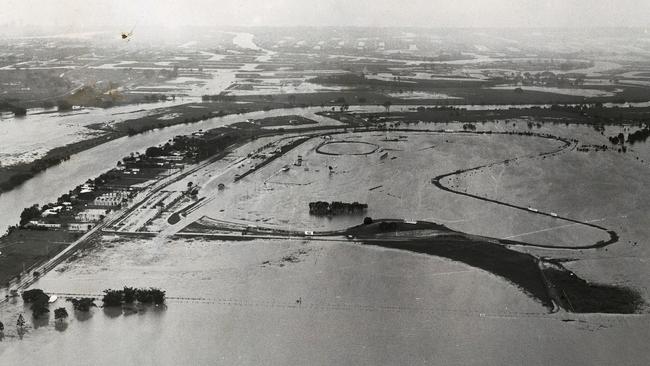
The Surfers Paradise International Raceway at Carrara disappeared entirely under the floodwater, while Surfers Paradise particularly was hard hit.
Nearby buildings, including the Gooding Timber and Haredware barn, were destroyed as the floodwaters consuming them.
The impact of the flooding was long-lasting, becoming the benchmark for a devastating weather event
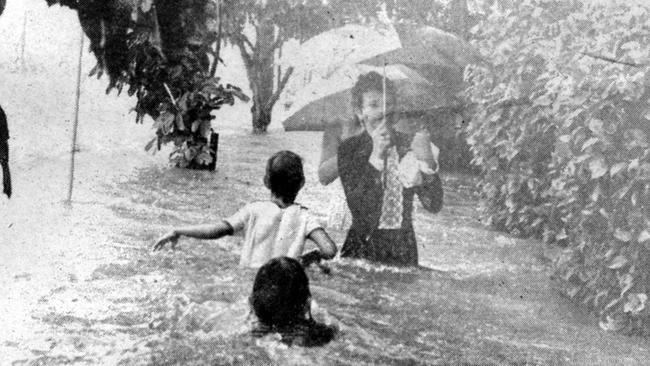
It halted any development in central Carrara for decades and was the key evidence used to try and stop Nifsan ultimately building Emerald Lakes in the late 1990s.
“In 1974, a 72-hour deluge filled the Gold Coast flood plains, cutting roads and isolating entire communities – let’s not forget that regular floods are a normal pattern on the Gold Coast landscape,’’ said Australian Conservation Foundation Gold Coast president Peter Farrell.
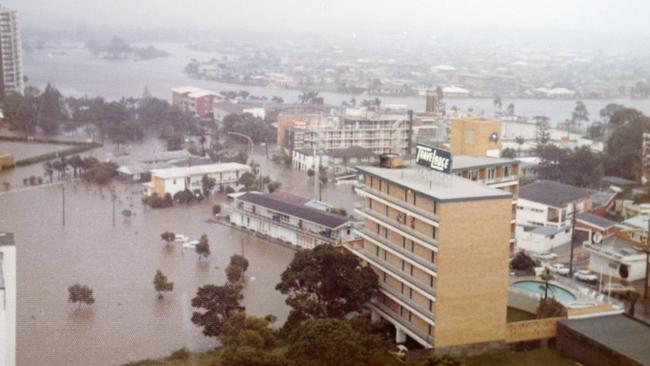
The 1974 floods remained the Gold Coast’s worst downpour for more than 30 years before the June 30, 2005 floods which came after days of downpour and was described as a “once in 100 year event”.
The midwinter event led to two deaths and major landslides on the southern Gold Coast, while the city’s stormwater drains struggled to cope with the sheer amount of rain.
Tropical Cyclone Oswald inundated the Coast in 2013.




